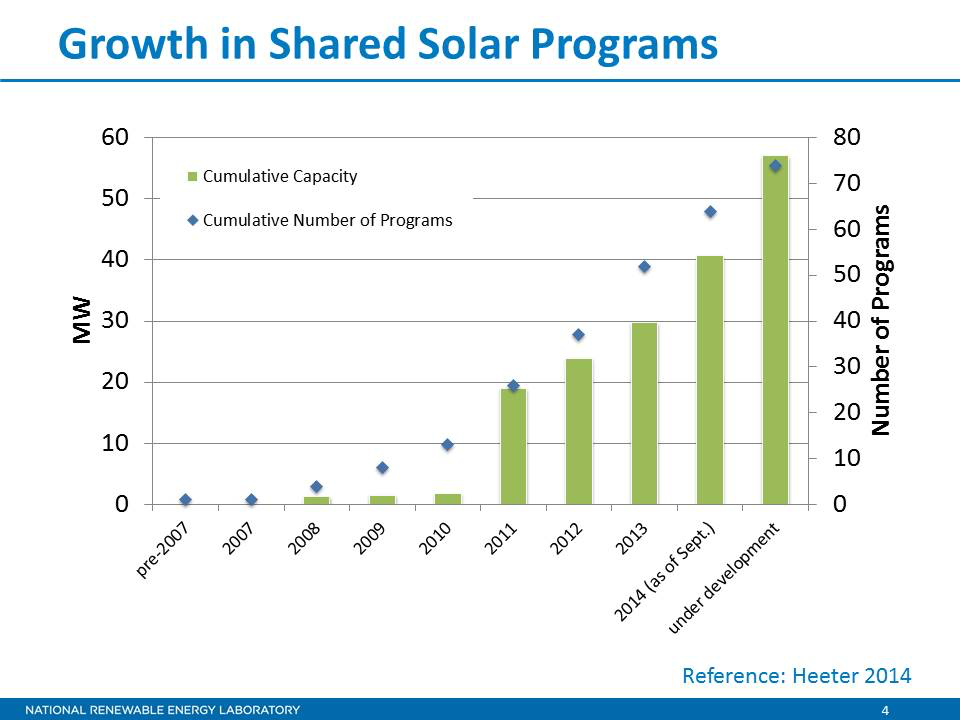
Updates
Minnesota’s community solar program hit a record 513 megawatts of operational capacity in February 2019. The chart above shows the progress of projects through the program since August 2015, and the nearly two-year lag between the program launch in December 2014 and the successful ignition of multiple megawatts of capacity in January 2017.
In recent news, the Minnesota Public Utilities Commission approved an adder to compensation rates for residential subscribers in October, boosting subscriptions by 1.5 cents per kilowatt-hour for projects started in 2019 or 2020. It’s hard to say definitively, but the project queue (including new applications, projects in study, projects in design/construction, and energized projects) rebounded to over 900 megawatts by December 1st, after falling from about 950 megawatts in January 2017 to about 800 megawatts earlier this year. The adder will come on top of the revised compensation scheme for new projects in 2018––based on the value of solar.
Below is a simplified version of the chart above, showing just projects in the design/construction phase or in operation.

Also, Xcel Energy publishes data on the mix of subscribers, so we can report that more than 10,000 residential customers (92% of all subscribers) are saving money with a shared solar subscription. Although the vast majority of the program’s capacity serves commercial customers (87%), nearly one-third of the total program capacity in March 2018 (about 100 megawatts) actually serves public entities like schools. In other words, community solar helps broaden those who benefit from solar by enabling individuals and public institutions to save money with solar! We’ll continue providing these subscriber spreads month-by-month if Xcel keeps reporting them.

Original post
I’ve been asked a lot of questions about Minnesota’s community solar program over the past couple years and it’s time to make one thing clear: Minnesota’s program is the best in the country.
Why? Because there 10 times more community solar projects in the queue—400 megawatts—in Minnesota than have been built in the history of community solar in the United States (40 megawatts).

Minnesota’s program (see infographic) is a comprehensive approach that makes developing community solar projects economically viable and—most importantly—that does not cap the development of community solar projects. The latter is the key.
Colorado’s landmark community solar legislation, for example, caps the program at 6.5 megawatts per utility per year (although there’s hope it may increase in the future). Massachusetts has just revamped their solar renewable energy credit program to make community solar a better investment. No other state has had significant community solar development, despite 11 states that have some form of virtual net metering that allows for sharing electricity output from an off-site solar energy project.
How big is Minnesota’s projected success?
Xcel Energy’s queue for community solar already has 20 times more solar in it than the state had installed at the end of 2014. If it all gets built, it would be enough to rank second in the country in annual solar installations in 2014.
I recently wrote that a state’s solar market can’t really launch without third party ownership—leasing or power purchase agreements that allow home and business owners to install solar with zero upfront cost, hand off maintenance concerns, and save money from day one. Indiana was the only potential exception, due to a (now defunct) feed-in tariff program operated by Indianapolis Power and Light. Minnesota may be the second.
I’m no stranger to community solar programs. I worked closely with advocates in Minnesota on the legislation, as part of a suite of pro-solar policies that passed in 2013. I’ve written extensively on community solar policies, from a 2010 report on the obstacles and opportunities to podcasts with leaders in the community solar movement. I’ve testified on community solar proposals in California and Maryland, and lent my advice in other states.
If the projects develop as expected in Minnesota, there will be no contest. To say it like a local, “Minnesota’s community solar program is not too bad.”

